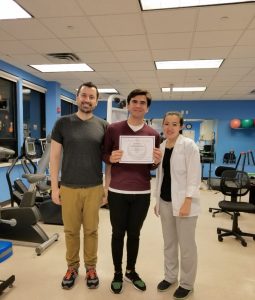Did you know that globally, arthritis affects over 350 million people?
Although there are over 100 different types of arthritis, many people will either have osteoarthritis or rheumatoid arthritis. At times, you’re likely to manage life with arthritis, but during other points in time, you’ll notice a severe elevation in pain, stiffness, etc.
As someone with arthritis, you’re likely to know these flare-ups all too well because they can be unbearable, but what should you do to manage them?
There are many tips available, but I want to focus on these four simple solutions today.
TLC
In many instances, flare-ups can occur due to overexertion of the joints, thus you’re in need of tender, love, and care. Although this seems like a ridiculously simple tip, it’s also one, which we’re likely to overlook due to its simplicity.
When the body experiences too much of anything, the body will likely relay signals to let us know the following: slow down and relax.
In this instance, the joints want you to know that it’s time to rest. Therefore, the more that you fight a flare-up, it’s important to realize that you’re bound to worsen the experience. Please, take a break.
Ice and/or heat
When you notice pain but no inflammation in the affected area, apply warm compression or a heating pad. For 15 minutes at a time, apply this heating source two to three times daily.
On the other hand, when you notice swelling, consider a colder source of treatment. This can include a cold gel pack, bag of ice cubes, and even a bag of frozen vegetables.
Keep in mind though, it’s essential to apply a towel between your skin and the cold or hot source. This way, you’ll limit any damage to the skin.
Provide support
Depending on the area affected, wearing a splint or brace will limit the severity of pain. By offering protection to the joints, the brace or splint will alleviate pressure.
Remain on schedule
By keeping a journal of past flare-ups, by following the recommendation of your therapist, and by committing to a system where you don’t miss your visits and affect the compounding effect, you’re likely to reduce the chances of experiencing future flares.
If you instead refuse to track past flares, if you refuse to track situations that lead to an elevation of stress, and if you refrain from following the recommendation of your doctor, flare-ups will likely increase.
Although the symptoms of a flare will make daily activities more challenging, and although we don’t have all of the answers around the subject of flare-ups, it’s best to do everything in your ability to limit them from taking place.
Therefore, please mak everything, the decision will help your doctor recognize when it’s necessary to make changes to your treatment or diet.
As an occupational therapist, my aim is to develop a plan that offers less disruption in your daily routine. Not only is arthritis disruptive on its own, but when you add flare-ups in the equation of your day, regular daily activities will become even more burdensome.
With as minimal pain on your joints as possible, I’ll create a customized plan around pain mitigation. In addition, I’ll also implement different exercises to build strength and increase range of motion.
When you implement simple adjustments such as dietary changes, methods to reduce stress, and of course remain consistent, the process will help improve quality of life.
So, although arthritis affects over 350 million people worldwide, you don’t have to suffer in silence. Instead, resources are available to offer a helping hand, and my door is always open to assist you.
At Occupational Therapy Concept, You’re Family. For a Free consultation, give me a
call at (718) 285-0884 for further evaluation and customized help for your arthritis.



